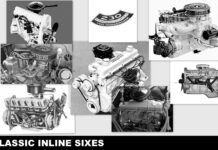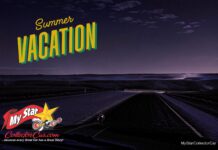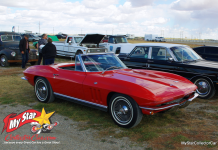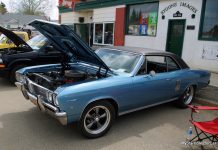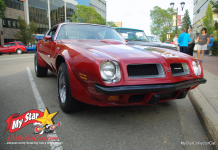I wasn’t the most dedicated drive-in guy because I was caught between the golden drive-in movie era and the sunset of the drive-in movie era,
I liked the concept of a drive-in movie, but I also understand why they didn’t make economic sense when the seasonal revenue didn’t justify clinging to a seasonal business long after after the property spiked in value.
Jerry Sutherland
My biggest memory about drive-ins will always be the ads during the show(s) because they set the tone for the whole experience—they started with slogans like ‘You get more out of life when you go to a movie’. That was a big promise.

Imagine you’re a young family in the 1950s and you roll into a drive-in with your Baby Boomer allotment of four or more young kids for a family night out.

On the surface this looked like an affordable activity because you don’t pay for babysitters, plus drive-ins were cheaper than movies because they often charged by the car—not the passengers.

The cheaper tickets were a false economy because the propaganda started the second you hooked the speaker on your window. They used more coercion than Fidel Castro’s Cuba to get you to buy a hot dog, so the first thing you heard was a ‘Countdown to Showtime’.

That’s fair enough–but the countdown wasn’t designed to be a favor to you. It was pure, ruthless marketing designed to get you to sprint over to the concession stand and buy some fast food with a generous 800% markup.

The countdown wasn’t a friendly service to the customer—it was a strong-arm tactic designed to get you to pay too much for a greasy burger that tasted like a mixture of hot fat and greasy-fried onions.
That may sound bad 60-70 years after the fact.

But if you were a kid at a drive-in during the golden era the burger that just forced your dad to miss a house payment was the best burger you ever had—or ever will have.

A car full of kids was a marketer’s dream for drive-in owners. Many of the ads used cartoon characters like dancing hot dogs to sell to the kids—not the parents.

You had to give the marketers credit because they aimed the marketing at the weakest link in the chain—an 8-year-old with no concept of the stark difference between a 3-cent hot dog and the 75-cent asking price.

The obvious reason for the extortion factor in the markup was because that’s where the real money was made in the drive-in business. The ads were always out of sync with the era, so if you went to a drive-in move in 1975, you were probably seeing the same ads your parents saw in the late 40s.

There was a Doctor Pepper beatnik-themed ad from the late 50s that made no sense to a kid at a 70s era drive-in–but that didn’t slow down the Doctor Pepper sales push to the newly minted hep-cats of the 1970s.

Drive-ins pushed the limit on all their pop ads so Coke, Pepsi, Orange Crush, and many other brands had their shining moments on the drive-in screen. It worked–these ads drew you in like the Bermuda Triangle draws in Scandinavian cruise liners.

They had an Orange Crush top-up-the-cup ad that looked so good it had customers sprinting to buy one—even if the paper cup full of Orange Crush cost more than a full tank of gas.

Finally, they started the show with some guidelines called ‘Simple Rules’ for the customers because apparently most of the patrons were teenaged hoodlums so they needed guidance from a movie screen version of a hall monitor.

They said stuff like this,
Please enter slowly. (Was this a problem? Did most drive-in customers like to hit the parking lot at 100 miles per hour?).
Replace speaker before starting your motor. (Would this have anything to do with the amount of vodka in the car–or was it simply because the driver just woke up after a dusk-to-dawn Godzilla marathon?)
Please enter highway slowly. (Like that’s going to happen when punks hit the road in their dangerous jalopies).
For courtesy’s sake avoid blowing horn. (Great idea. Horn honking always up the game for taking a punch in the face–but if this message does help, New York City traffic will get a lot quieter).
As I said, I was never a drive-in regular, and the last authentic one I went to was in 2014–but I still miss the overpriced cartoon dancing hot dogs.
Jerry Sutherland
By: Jerry Sutherland
Jerry Sutherland is a veteran automotive writer with a primary focus on the collector car hobby. His work has been published in many outlets and publications, including the National Post, Calgary Herald, Edmonton Journal, Ottawa Citizen, Montreal Gazette, Saskatoon StarPhoenix, Regina Leader-Post, Vancouver Sun and The Truth About Cars. He is also a regular contributor to Auto Roundup Publications.
- CLICK HERE TO SIGN UP FOR THE NEWSLETTER
- CLICK HERE to Like us on Facebook
- CLICK HERE to Follow us on Twitter
- CLICK HERE to Follow us on Pinterest
Please re-post this if you like this article.





